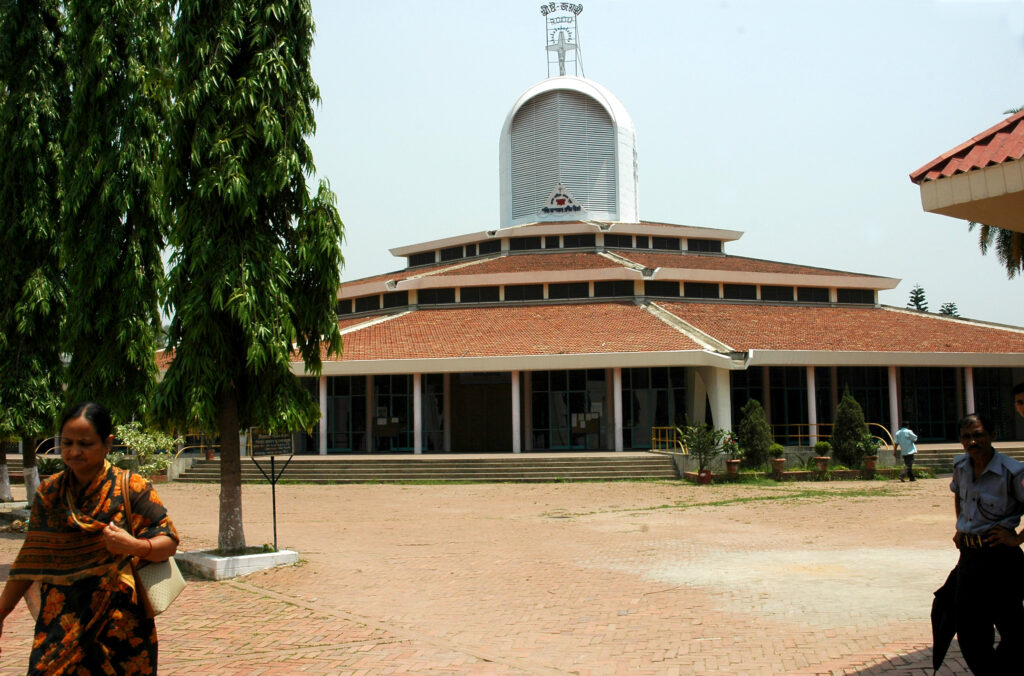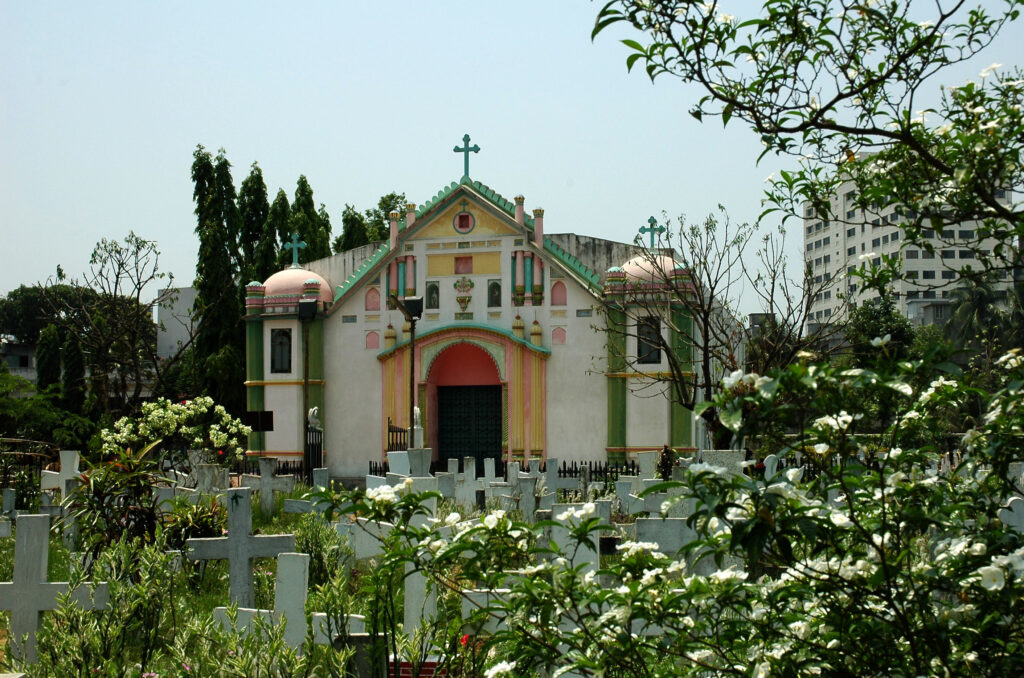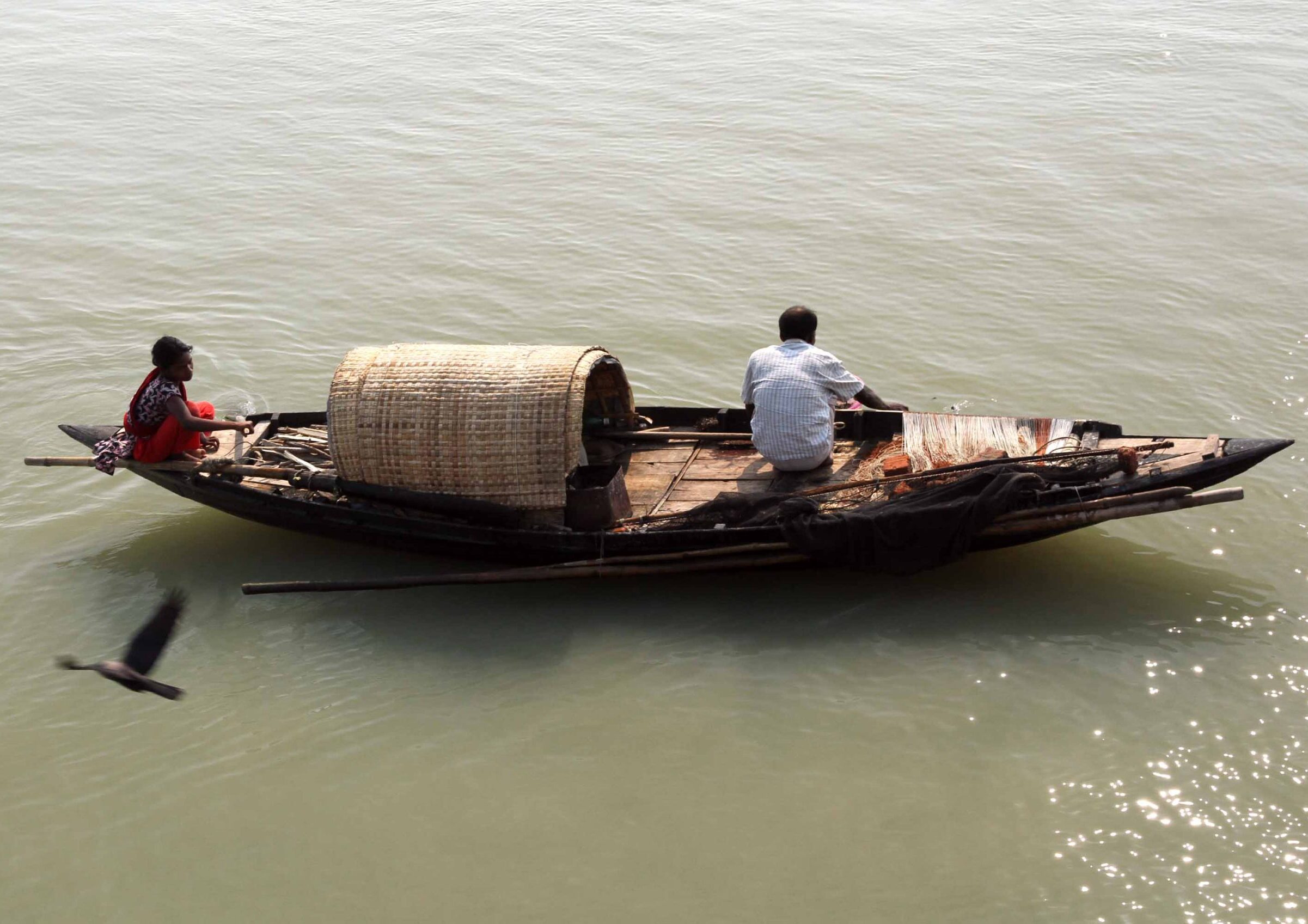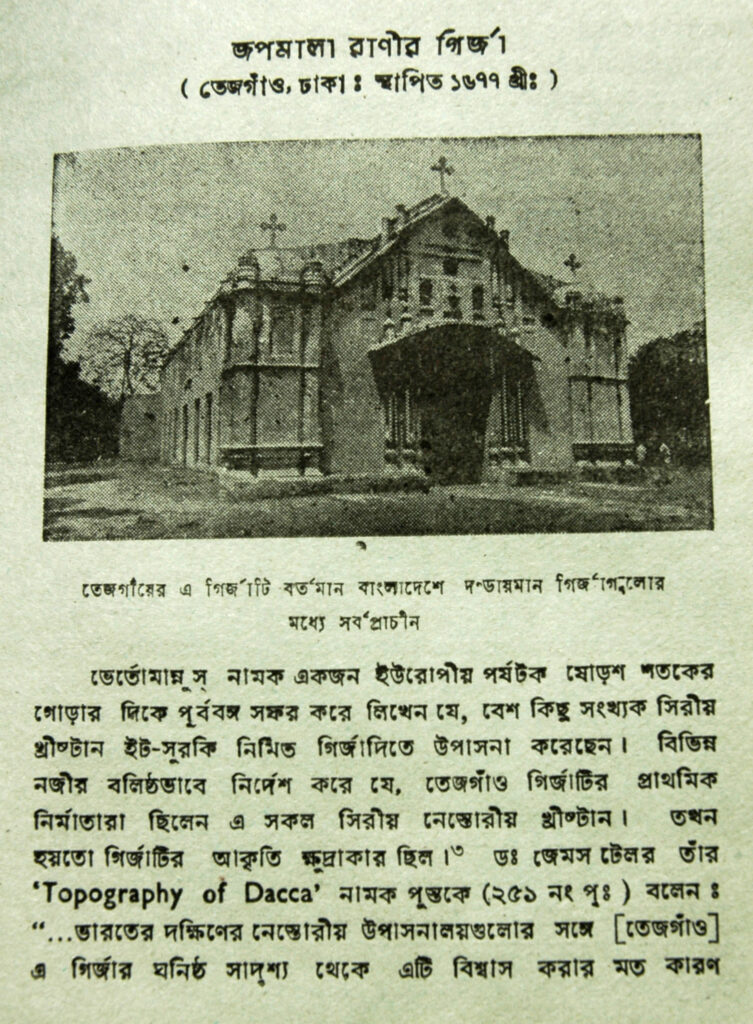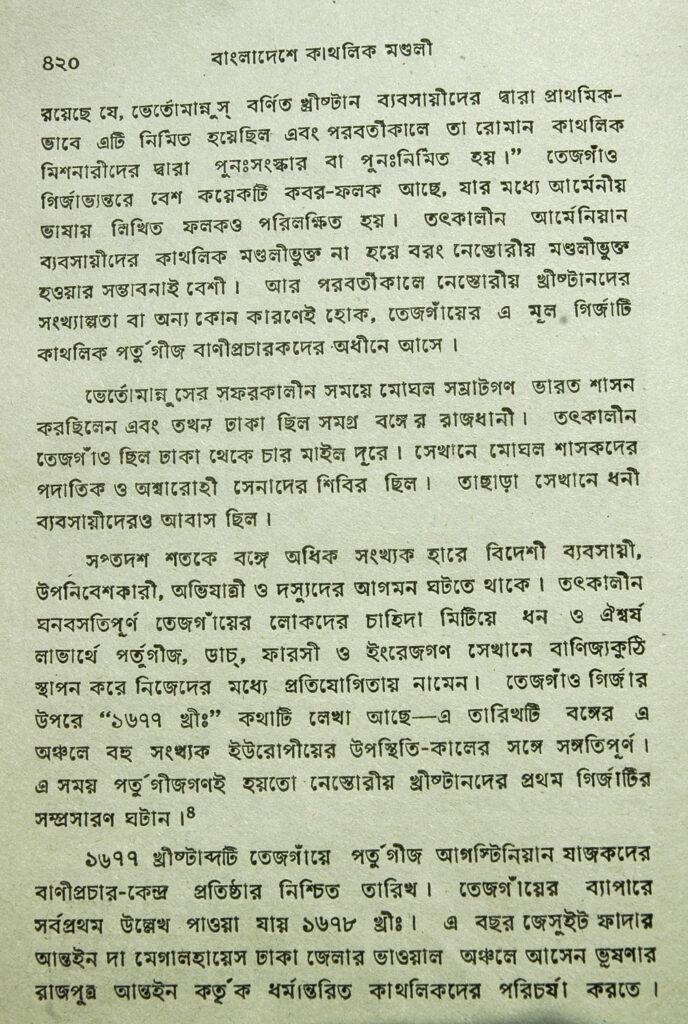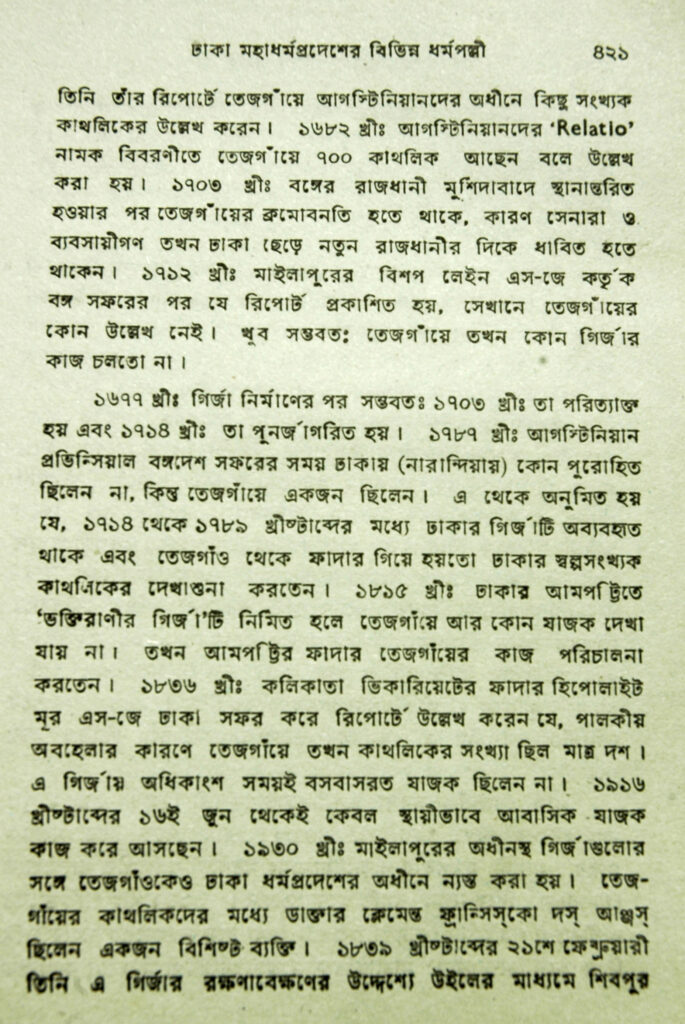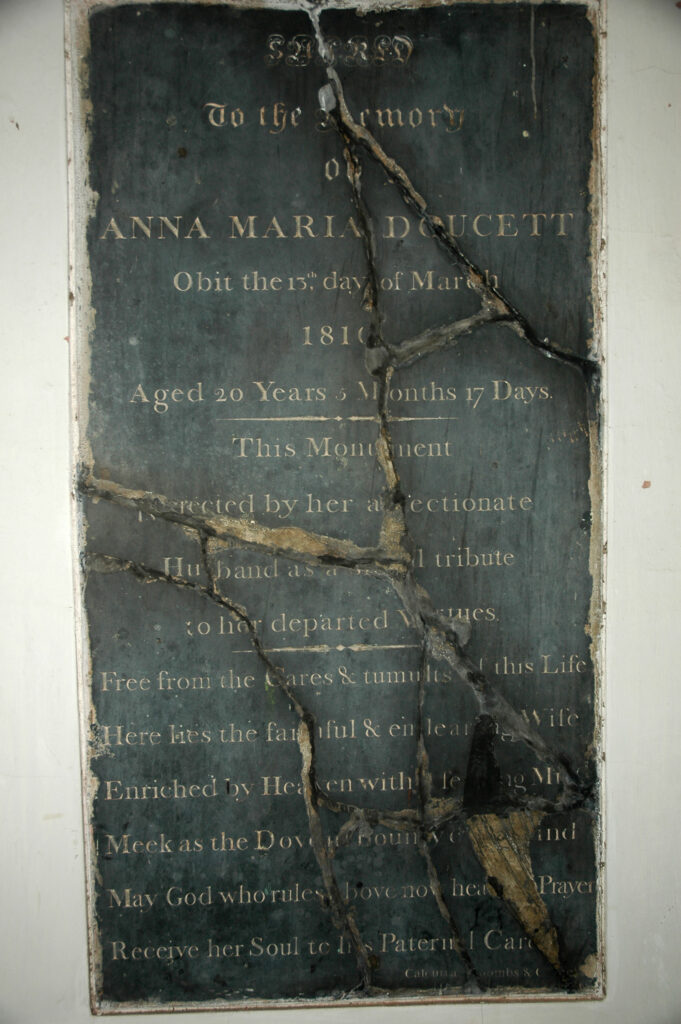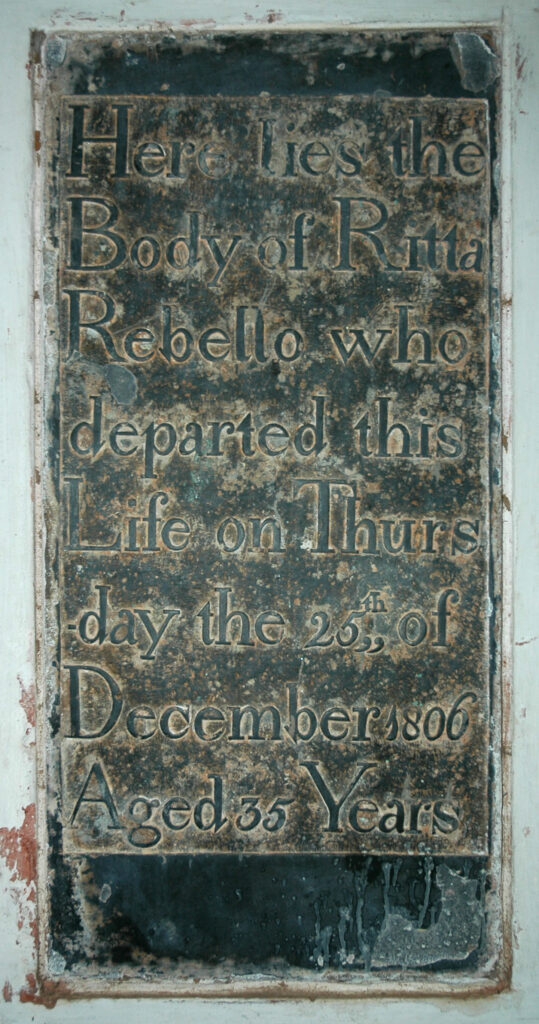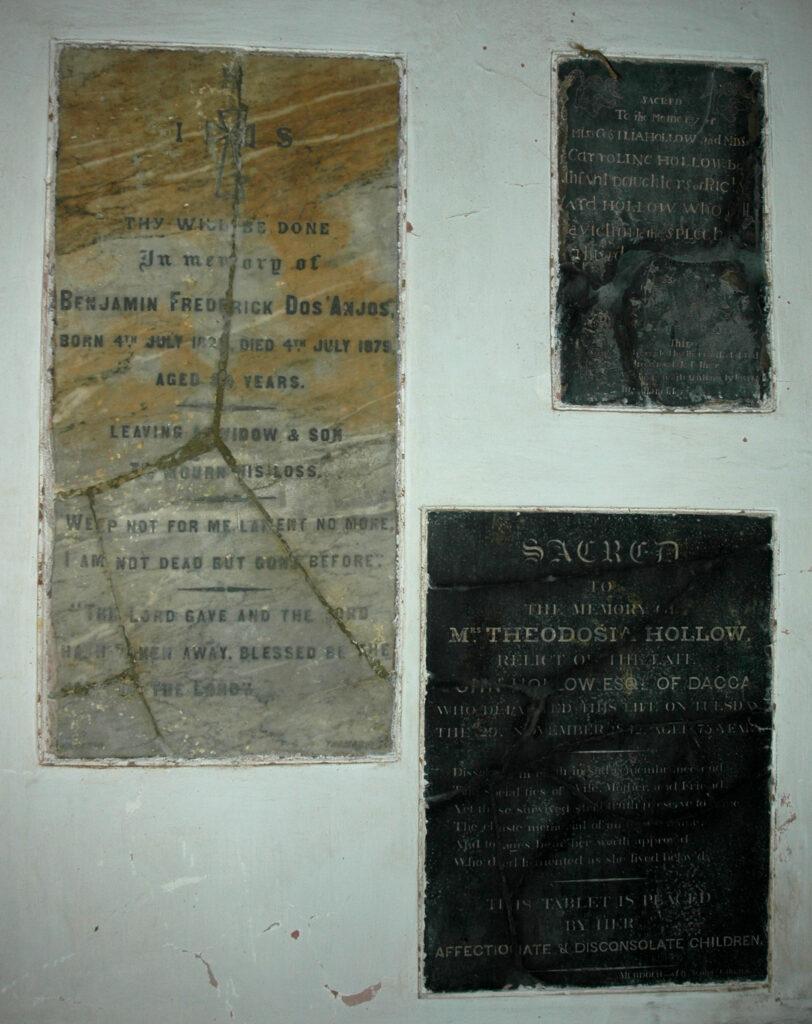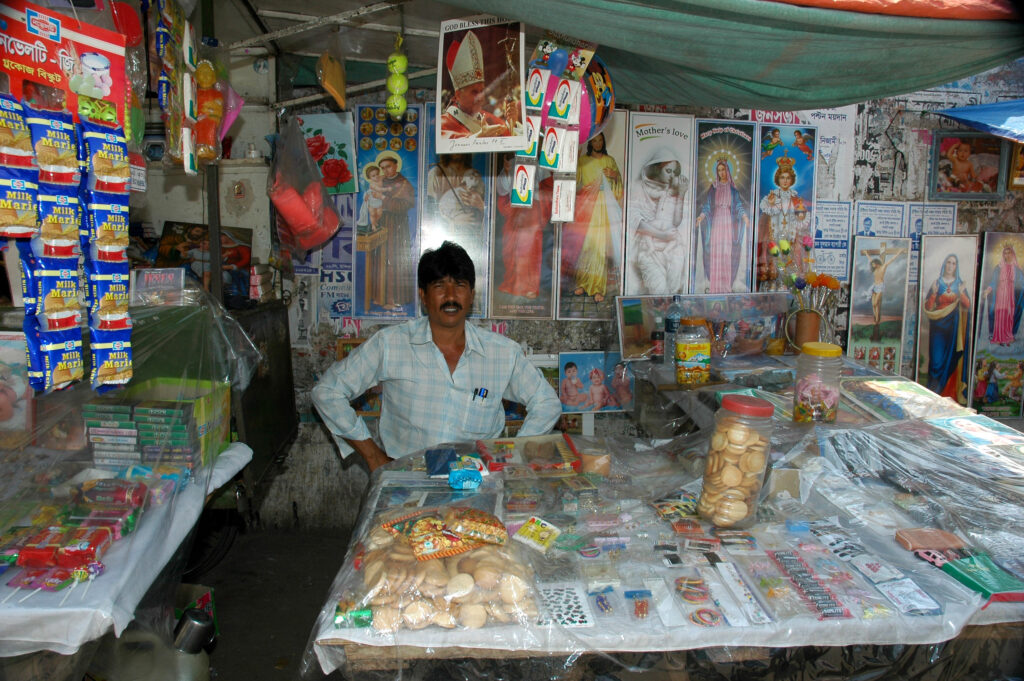Tejgao, Dhaka, Bangladesh
The Holy Rosary Church, the oldest living church in Bangladesh, was built in 1677. Even though this place of worship was built by the Portuguese in 1677, their presence in and contact with Bengal goes back to the early 16th Century.
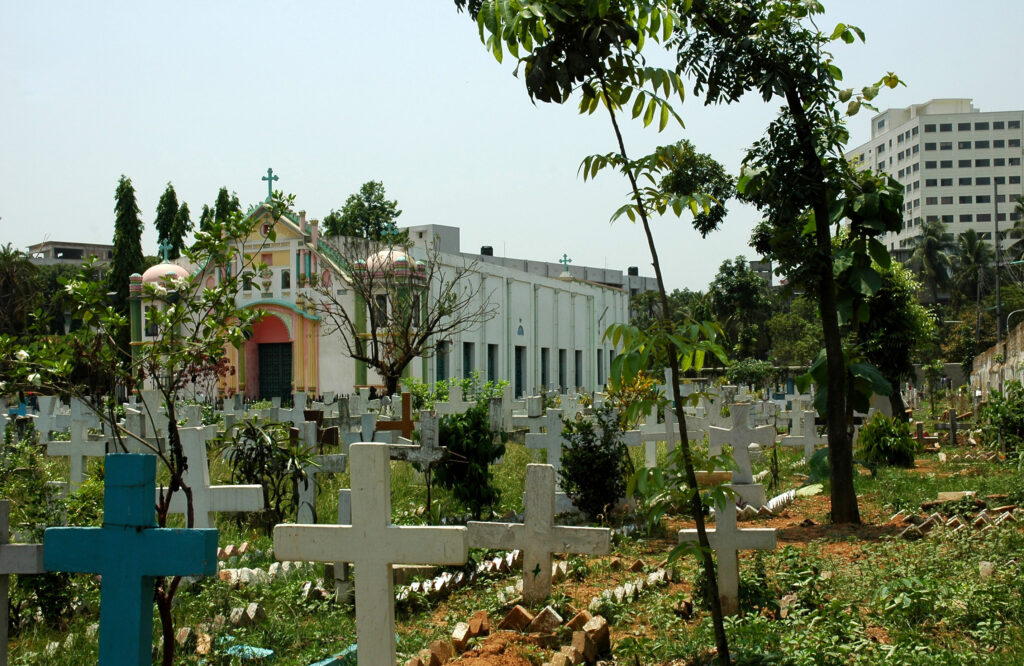
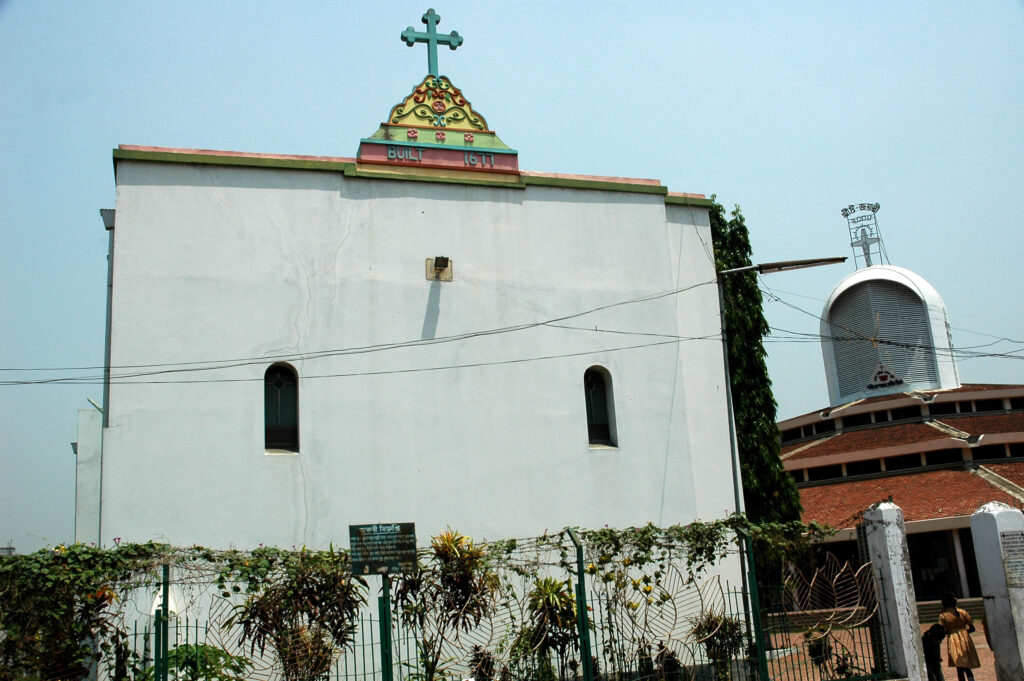

The Portuguese who came to Bengal, officially from 1517, got engaged in both approved and illicit trade, piracy and participated in local in wars. Chittagong was the first main settlement of the Portuguese in Bengal, called Porte Grande; a smaller base was established in Satgoan, called Porto Pecquono, near present-day Kolkata. Permission for both these settlements was given the sultan of Bengal in exchange for the Portuguese agreeing to provide military assistance to the Sultan’s defence against Sher Shah. Later, they established settlements in other places within Bengal, including Dhaka. By 1580 some Portuguese traders had settled in Dhaka and started to export Muslin, cotton and silk to Europe and South East Asia. Rice was also exported from Bengal.
The Holy Rosary Church was built in Tejgao, where a sizeable Catholic community developed through Portuguese settlement, conversions and the birth of children from mix marriages.
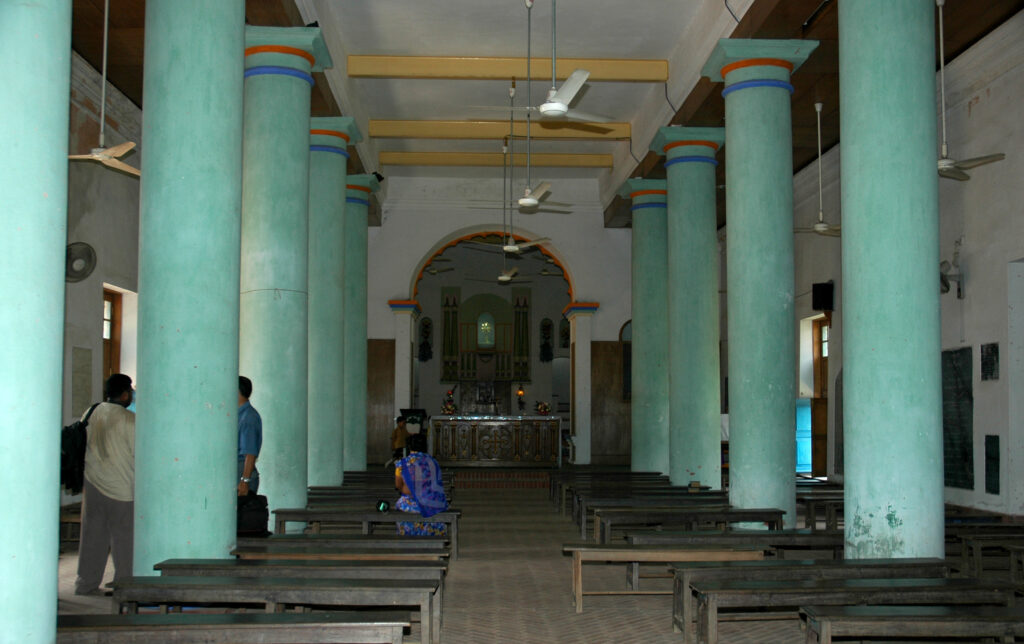
There were several other churches in Dhaka during the seventeenth century to cater for the needs of the growing Catholic community. This has been recorded in the writings of Sebastian Manrique, the Portuguese visitor in Bengal in 1640. This is from an excerpt of what he says about Dhaka.
“This is the chief city of Bengala, and the seat of the principle Nababoo or Viceroy, appointed by the Emporer, who bestowed this viceroyalty, on several occasions, on one of his sons. For, this city is today, as I said, the chief city, and as such, the metropolis of those in Bengal. It stands in a wide and beautiful plan on the banks of the famous and fructifying Ganges (Buriganga) river, beside which the city stretches for over a league and a half. The well-known suburbs of Manazor (Maneswar) at one end of Narindin (Narinda) and Fulgari (Phulbaria) at the other serve to round of the city suitably. These suburbs are Christian settlements, in which my Sacred Order possesses a picturesque though small Monastery with a good church. Here the celebration of Divine worship in the midst of this vast paganism also teaches it the real road to salvation.”
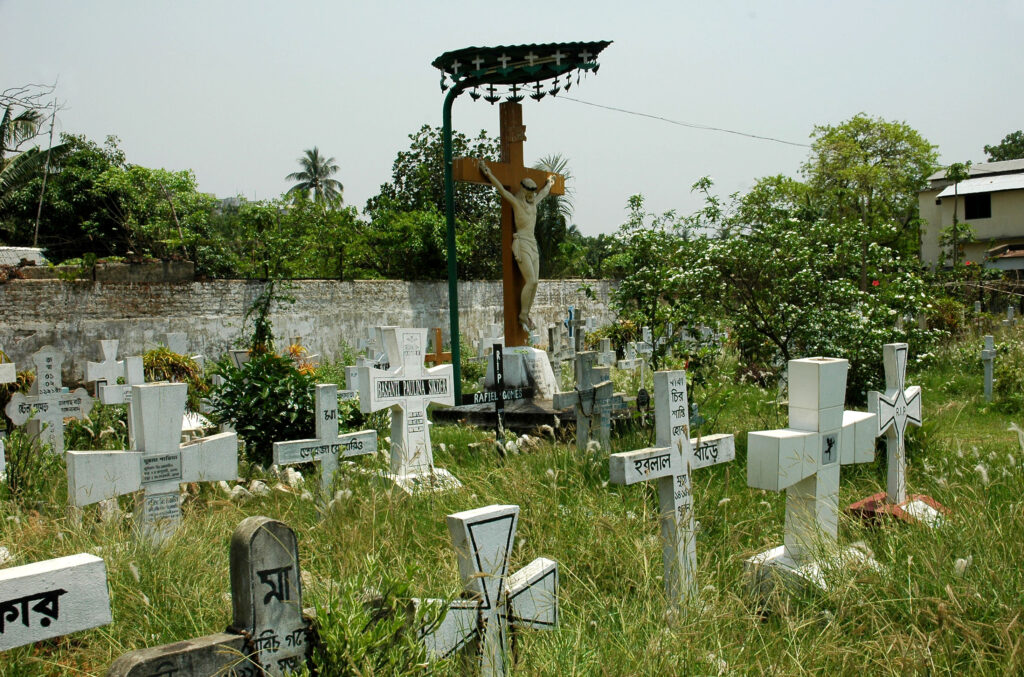
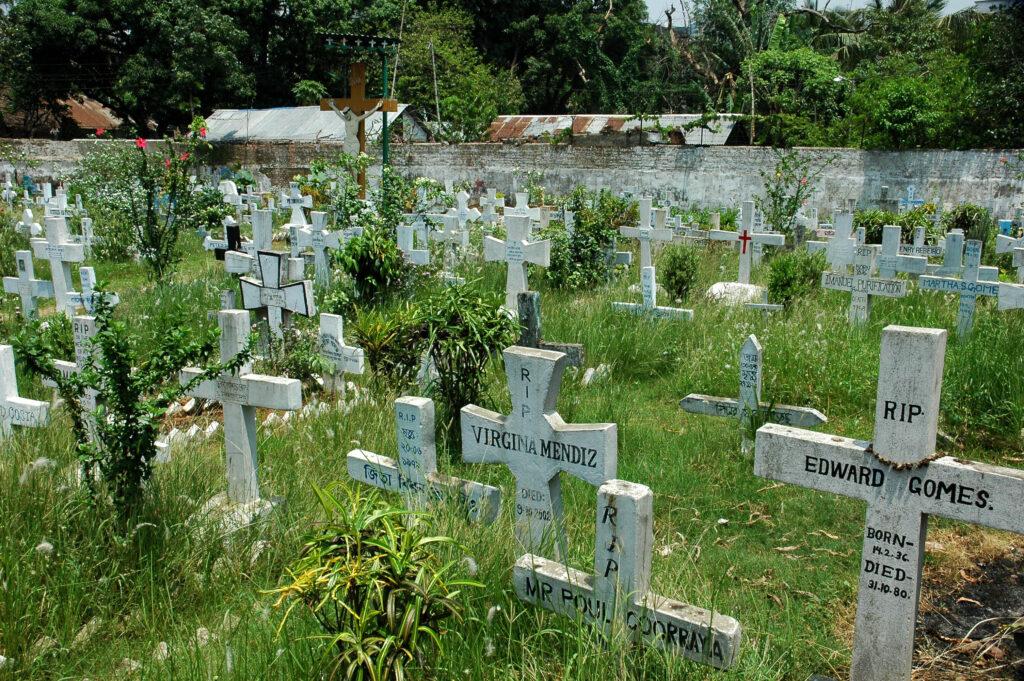
Two pictures of the New Holy Rosary Church below, completed in 1993. It is a very impressive and aesthetically pleasing building and designed to cater to the needs of Dhaka’s Catholic community. Although this community is quite small, they do however play a very important role in the life of the city.

